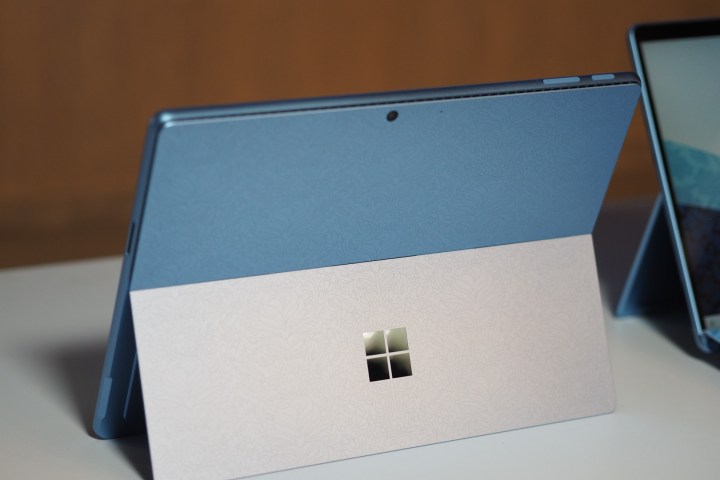Microsoft has just revealed the Surface Pro 9 at its fall hardware event, the latest iteration of the detachable tablet that kicked off the modern 2-in-1 laptop. The Surface Pro 8 introduced a larger display, smaller display bezels, and a new more rounded design. The latest model keeps the same chassis, albeit with more color options, while making several significant internal upgrades.
I got to play with the Surface Pro 9 at Microsoft’s Los Angeles launch event and found it to be quite familiar on the outside while holding great promise on the inside. We’ll produce a full review as soon as we can, but for now, here are some initial impressions of Microsoft’s latest full-size tablet.
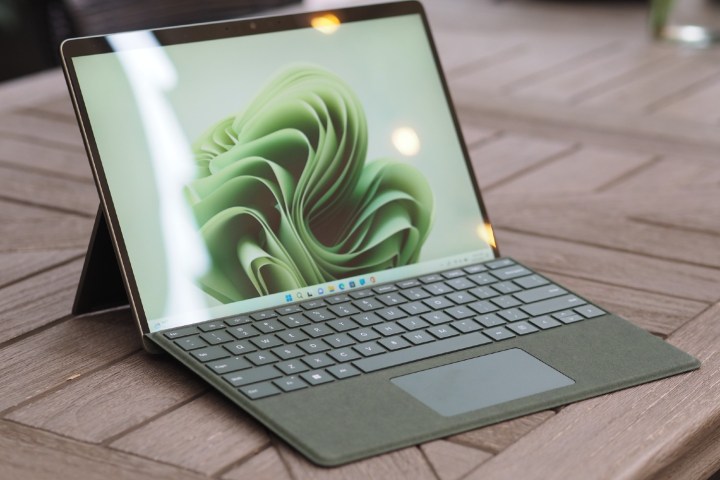
Specs
| Microsoft Surface Pro 9 | |
| Dimensions | 11.3 inches by 8.2 inches by 0.37 inches |
| Weight | 1.94 pounds |
| Processor | Intel Core i5-1235U Intel Core i7-1255U Microsoft SQ 3 (5G models) |
| Graphics | Intel Iris Xe Microsoft SQ3 Adreno (5G models) |
| RAM | 8GB to 32GB LPDDR5 8GB or 16GB LPDDR4x (5G model) |
| Display | 13-inch PixelSense 2,880 x 1,920 IPS display up to 120Hz |
| Storage | 128GB to 1TB removable SSD 128GB to 512GB removable SSD (5G models) |
| Touch | Yes |
| Ports | 2 x USB-C with Thunderbolt 4 1 x Surface Connect port 1 x Surface Keyboard port 1 x 3.5mm audio jack 1 x nano SIM (5G models) 2 x USB-C 3.2 (5G models) |
| Wireless | Wi-Fi 6E and Bluetooth 5.2 Optional 5GB WWAN |
| Webcam | 1080p with infrared camera for Windows 11 Hello 10MP rear-facing |
| Operating system | Windows 11 |
| Battery | 60 watt-hour |
| Price | $1,000+ |
The Intel Surface Pro 9 starts at $1,000 for a Core i5, 8GB of RAM, and a 128GB SSD. It maxes out at $2,600 for a Core i7, 32GB of RAM, and a 1GB SSD.
The 5G entry level is $1,300 for a Microsoft SQ3 CPU, 8GB of RAM, and a 128GB SSD, while the top-end configuration is $1,900 for an SQ3 processor, 16GB of RAM, and a 512GB SSD. Commercial configurations of both are $100 more.
Familiar but more colorful
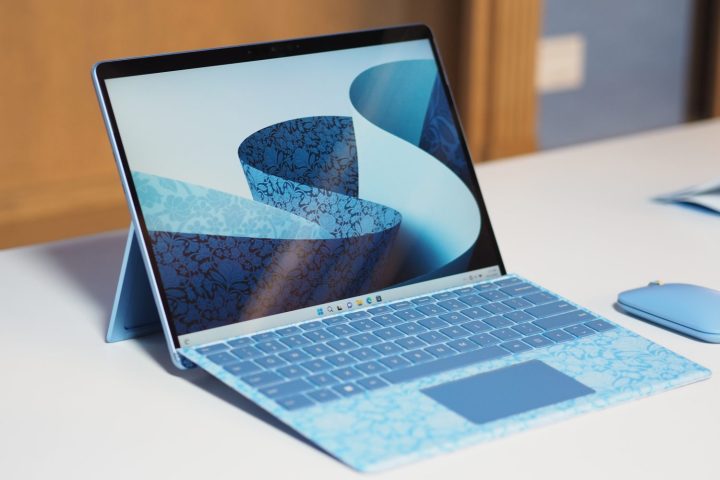
We loved the look and feel of the Surface Pro 8, and the Surface Pro 9 maintains the same size and aesthetic. It’s a comfortable tablet to use as a writing and drawing surface, and there’s enough screen real estate for real work when in laptop mode with the keyboard attached.
The smaller bezels, particularly on the sides, don’t hamper tablet use but create a more modern appearance, and the rounded edges are comfortable in hand. As with all Surface laptops, the build quality is excellent with a rigid chassis that resists bending and flexing. The Surface Pro 9 retains the tablet’s place on our list of best 2-in-1s.
That’s not to say that Microsoft has done nothing to freshen up the Surface Pro 9’s appearance. In addition to the Platinum and Black colors available with the earlier model, users can now choose Sapphire and Forest. As usual, matching Signature Keyboards with Alcantara fabric (containing at least 12% renewable content) are available to create a cohesive color scheme.
They cost extra, as always, adding to the tablet’s status as a premium machine. Microsoft has also introduced a Liberty Special Edition with an engraved design and matching Type Cover from Liberty London.
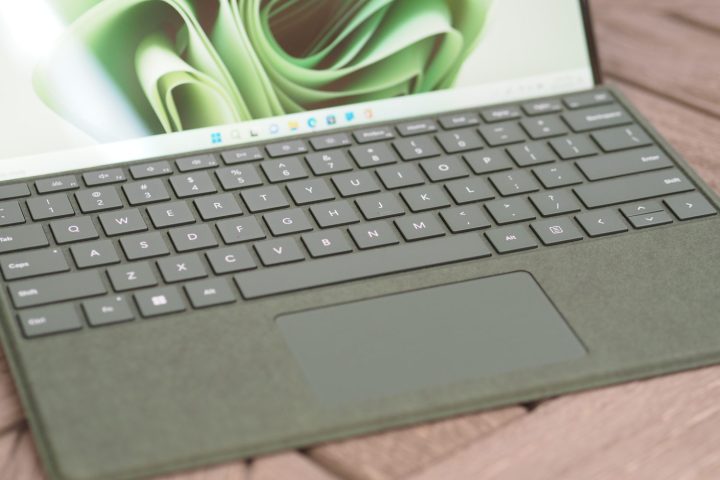
As before, the Surface Pro 9 is a thin machine at 0.37 inches and light at 1.94 pounds, although the 12.9-inch iPad Pro is slimmer at 0.25 inches and lighter at 2.5 pounds. Adding the Type Cover increases the thickness and weight but rounds out the Surface Pro 9’s usefulness as a standard laptop. The typing experience with the Type Cover remains the same, with light and snappy switches that offer plenty of travel and with the same slight bounce when the keyboard is at its most comfortable angle.
There’s the same high-contrast and high-resolution 13-inch 3:2 display, running at 267 pixels per inch and up to 120Hz. Intel models feature Dolby Vision IQ for enhanced high dynamic range (HDR) along with auto color management support, while the 5G model lacks those features but offers adaptive color.
We’ll have to wait for our official review to confirm, but the display was bright enough to overcome the overhead lighting in the event venue and seemed to offer the excellent contrast common to all Surface displays.

The Surface Pro 9 supports the optional Surface Slim Pen 2 with haptic feedback, which along with the 120Hz refresh rates makes for one of the best inking experiences. The Pen pops into a slot on the Signature Pro Type Covers for convenience and charging.
Finally, the front-facing webcam runs at 1080p, while the rear-facing camera is a 10MP version. On the 5G model, Windows Studio Effects are supported, with Portrait Blur, Automatic Framing, and Eye Contact functionality. Both models incorporate an infrared camera for Windows 11 passwordless login. Audio is provided by dual 2W speakers on both models, with Dolby Atmos and Voice Clarity on the Intel version and Voice Clarity and Windows Studio Effects (Voice Focus) on the 5G version.
The differences lie inside
While the Surface Pro 9 is quite familiar on the outside, it’s undergone some significant changes on the inside. There are now two versions of the tablet, one with Intel CPUs and one that inherits the Windows on ARM mantle from the Surface Pro X.

On the Intel side, the Surface Pro 9 is now based on Intel’s 12th-gen processors, specifically, the 15-watt Core i5-1235U and Core i7-1255U. Both offer 10 CPU cores (two Performance and eight Efficient) and 12 threads, with the Core i7 running at faster frequencies. In our testing, the CPUs have been solid productivity performers with enhanced efficiency, promising the same with the Surface Pro 9. The efficiency should also allow the tablet to run cooler on the surface and internally than higher-wattage parts. Along with the CPU upgrade, the Intel-based Surface Pro 9 utilizes faster LPDDR5 RAM.
As with the Surface Pro 8, up to 32GB of RAM can be configured along with up to 1TB of PCIe SSD storage. The SSD is removable, allowing upgrades to larger SSDs, which is a boon for the tablet’s useful lifespan. A TPM 2.0 chip is on hand for enterprise-grade security and BitLocker support, and the Surface Pro 9 is a Windows 11 Secured-core machine.
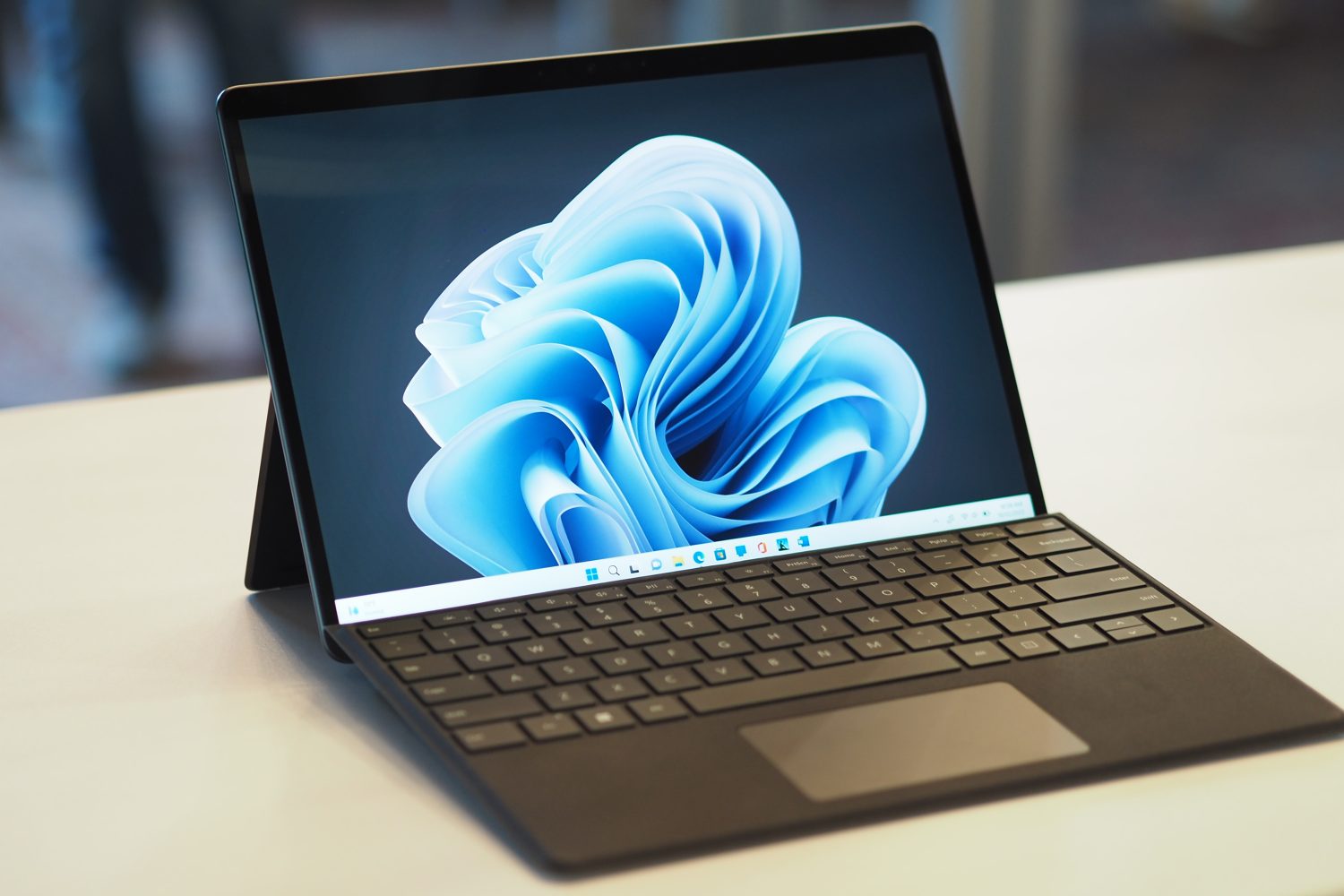
The new 5G model is built around the Microsoft SQ3 CPU, a custom version of Qualcomm’s Snapdragon 8CX Gen 3 processor. In our testing, this CPU has provided competent productivity performance and exceptional battery life. Windows on ARM does involve some compromises in application and driver support, but for those who run standard productivity workflows, it’s a suitable platform. The increase in battery life should be particularly evident in the 5G model, and we expect it to last for a full working day and then some.
Wired connectivity is unchanged on the Intel version, with two USB-C ports with Thunderbolt 4 support, a Surface Connect port, and a Surface Keyboard port. The 5G model is limited to USB-C 3.2 without Thunderbolt 4 and includes a nano SIM slot for the 5G WWAN functionality. Both models support Wi-Fi 6E and Bluetooth 5.1.
More options are a good thing
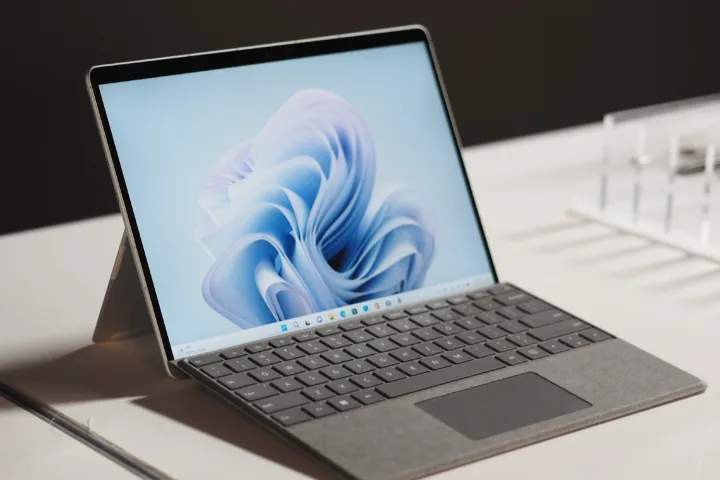
The option to run Windows on ARM adds a new dimension to the Surface Pro 9. Always-connected 5G internet plus longer battery life while enjoying the excellent design of the Surface Pro 9 is a benefit to road warriors, while those who prefer the best performance can stick with Intel. It’s a win-win.
The competition remains stiff, particularly with the excellent iPad Pro offering a more streamlined tablet experience. But among Windows 11 detachable tablet 2-in-1s, the Surface Pro 9 is already a front-runner for retaining the line’s place as the best.
Editors’ Recommendations



